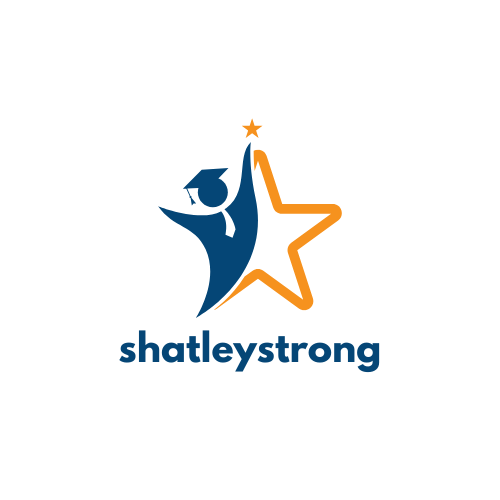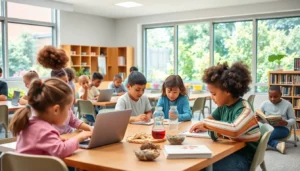Table of Contents
ToggleWhen you think about education, do thoughts of rigid classrooms and endless tests spring to mind? Here’s a thought: what if the system could be turned upside down, allowing learning to be as engaging as binge-watching your favorite series? Enter the world of alternative education academies. These innovative institutions are flipping the script on traditional learning, offering remarkable avenues for students who don’t quite fit the mold. Ready to explore how this fresh take on education might just hold the key to unlocking your potential? Let’s immerse.
Understanding Alternative Education

Alternative education refers to diverse educational approaches that deviate from conventional schooling. This concept emphasizes flexibility, adaptability, and student-centered learning, honoring the unique needs of each learner. Many students thrive in non-traditional settings, as conventional methods often fail to engage them. Unlike traditional institutions, where one-size-fits-all dominates, these alternative academies focus on creating a nurturing and stimulating learning environment.
In these academies, classroom walls can disappear. Instead of a rigid structure, there’s a world of hands-on experiences, projects, and real-life applications. Students are empowered to pursue their passions at their own pace, leading to richer learning experiences. This freedom fosters creativity, independence, and a lifelong love for learning.
Benefits of Alternative Education
Choosing an alternative education academy comes with a treasure trove of benefits. First, there’s the personalized learning experience. Each student can engage with the curriculum that resonates most, allowing for deeper understanding and retention. This adaptability not only nurtures academic success but also promotes emotional and social development.
Second, the focus often shifts from grade-centric assessments to holistic evaluations. Instead of merely chasing grades, students can concentrate on mastering the material, so fostering intrinsic motivation. Another significant perk lies in building critical life skills. Whether it’s teamwork, problem-solving, or communication, alternative education facilities prepare students for real-world challenges. Also, an environment that cultivates creativity and critical thinking equips students to navigate an ever-evolving job market.
Types of Alternative Education Programs
Alternative education comes in various flavors, each providing unique paths to knowledge.
Curriculum and Teaching Methods
Some programs adopt progressive or experiential learning approaches. Instead of textbooks, they rely on hands-on workshops, real-world projects, or community involvement to teach critical thinking. Such methods enrich the educational experience, making learning feel less like a chore and more like an adventure. For instance, project-based learning allows students to explore subjects deeply, developing both knowledge and skills simultaneously.
Assessing Student Progress
Assessment in alternative education often diverges from standardized testing. Many alternative academies use portfolios, presentations, and peer evaluations as primary measures of progress. These methods provide a more comprehensive view of a student’s abilities, focusing on their understanding rather than rote memorization. By incorporating diverse assessments, these institutions empower students to take charge of their own learning journeys.
Finding the Right Alternative Education Academy
Finding the perfect alternative education academy can feel daunting, but with a little guidance, the process becomes manageable. Start by considering the values and philosophies of the academy. Does its mission align with your child’s needs and your family’s educational goals? A school that prioritizes holistic development may be ideal for students who thrive outside conventional parameters.
Next, research the curriculum and teaching methodologies. Many schools offer open houses or informational sessions that provide insights into their approaches. Engage with current students and parents, gathering firsthand accounts of experiences within the academy. Finally, evaluate the school’s facilities and staff. A supportive, experienced team is crucial in fostering the necessary environment for growth.
Challenges and Considerations
While alternative education offers a cornucopia of benefits, it’s essential to consider potential challenges. One major concern can be the perception of non-traditional education by society. Some may question the credibility of alternative programs, especially in college admissions or job placements. It’s vital for academies to demonstrate their value through successful graduate outcomes.
Also, parent involvement can be more demanding. Many alternative programs encourage parents to take an active role in their child’s education, which can be both a blessing and a challenge. Communication and collaboration between parents and educators are paramount to ensure the success of the child’s alternative educational experience.
Success Stories from Alternative Education Academies
Success stories abound within the realm of alternative education. Many students who struggled in traditional settings often flourish at these academies. For instance, take a look at a student named Alex. Once disengaged and unmotivated in a traditional classroom, Alex found a home in an alternative academy that offered project-based learning focused on the arts. Now, Alex not only excels academically but has also discovered a passion for creative expression.
Such stories mirror the experiences of numerous alumni, highlighting the potential of alternative education to unlock talents previously shrouded by patchy academic experiences. Employers increasingly recognize skills honed in alternative setting, showcasing the growing acceptance of diverse educational backgrounds.




